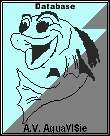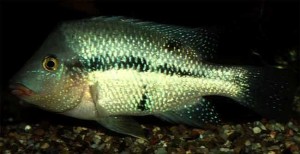 |
Amphilophus altifrons |
 |
||||||||||||||||||||
|
|
|
|||||||||||||||||||||
| Explanation of the symbols | ||||||||||||||||||||||
|
|
|
|||||||||||||||||||||
|
|
||||||||||||||||||||||
|
||||||||||||||||||||||
|
This fish is very aggressive to species of their own kind.
You should keep them as a couple. The best way is to raise a
group of unrelated juveniles to sexual maturity and allow
them to pair off. The best pair should be chosen for
breeding and other pairs should be removed. The
aquarium should be setup with a lot of driftwood and stones
that form caves and hiding places. The fish will dig
up the substrate material, so it is best to use no plants
except they are well anchored. Enough free swimming
space should be left. A strong filter and a frequent
changing of the water is necessary. They are omnivorous. You should give them a great variety of live and frozen food. You better give them no red worms. Breeding with a good pair is easy. Eggs are laid and fertilized on a flat substrate. Both parents take care of the fry. When the young fishes are swimming free you can feed them new born baby brine shrimp and after a few days fine dry flakes |
||||||||||||||||||||||
|
|
||||||||||||||||||||||
|
Jens Gottwald |
||||||||||||||||||||||
 |
||||||||||||||||||||||
|
Copyright ©AV AquaVISie. All rights reserved. |
||||||||||||||||||||||
